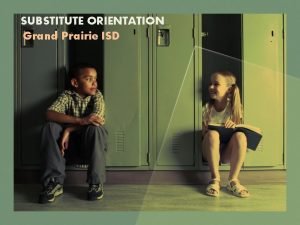MISSION STATEMENT The Mission of South Florence High

- Slides: 1

MISSION STATEMENT The Mission of South Florence High School is to prepare students to become responsible, world-class citizens and highachieving lifelong learners. Class Rules: Course Description World History from 1300: The Making of the Modern World is designed to assist students in understanding how people and countries of the world have become increasingly interconnected. In the last six hundred years, population growth, demand for resources, curiosity, and technology have converged to draw the distant corners of the world closer together. 1. Seat Belt Law Applies Here! Be in your seat before the tardy bell and ready to learn. All you need to do is ask when you need to get up. 2. Keep Hands, Feet, & Criticisms Inside the Ride At All Times! Respect yourself, your classmates, and your teacher and respect will be returned. 3. Silence Is Golden, Let’s Be Rich! Be sure to listen while instruction is going on, you will miss something important otherwise. 4. BE A BRUIN!!! A Bruin a wise, respected, hardworking, and thinking creature Homework Policy/Make-up Policy: Homework will be accepted on the day that it is due. No late work will be accepted unless the student has been absent or has a legitimate reason for the delay. It is the student’s responsibility to get the make-up work when absent. Work should be completed as soon as possible after an absence; however, no more than five days should elapse before work has been completed. South Florence High School Course Syllabus World History CONTACTS: The number is (843)664 -8190 or by email: Clayton. Owens @fsd 1. org Coach Clay Owens Mobile 8 Grading Scale: The following is the grading scale used by Florence School District 1: A 90 -100 B 80 -89 C 70 -79 D 60 -69 F 59 and Below I Incomplete Cell Phone Policy Cell phones are to put away during class unless authorized by the teacher. During tests they will be put into phone holder on door. Consequences: 1. Warning 2. Call Home 3. Referral Method of Assessment: Formative Summative 45% 55% Course Requirements: ● ● Assigned daily homework must be completed Google Chromebook charged with access to Coach Owens Google Classroom Participation in class activities Prepare and study for quizzes and tests Grade Reports and Grade Records Progress reports and report cards are sent home to keep parents informed of student performance. They are to be signed and returned to the subject area teacher the next day. Students grading records are kept in the grade book and on computer software. Parents are encouraged to keep up with their child’s grades via parent contact or Parent’s Portal. Course Learning Goals: Standard MWH-1: The student will demonstrate an understanding of the major factors that facilitated exchanges among groups of people and how exchanges influenced those people in the fourteenth and fifteenth centuries. Standard MWH-2: The student will demonstrate an understanding of the benefits and costs of the growth of kingdoms into empires from the fourteenth through the sixteenth centuries. Standard MWH-3: The student will demonstrate an understanding of the impact of religious movements throughout the world in the fourteenth through the sixteenth centuries. Standard MWH-4: The student will demonstrate an understanding of the conflicts of the seventeenth and eighteenth centuries in Europe, America, Africa, and Asia. Standard MWH-5: The student will demonstrate an understanding of the influence of ideas and technology on the development of nation-states and empires in the sixteenth through the nineteenth centuries. Standard MWH-6: The student will demonstrate an understanding of the creation of nationstates in Europe and the struggle by non-European nations to gain and/or maintain sovereignty. Standard MWH-7: The student will demonstrate an understanding of the causes and consequences of global warfare in the first half of the twentieth century. Standard MWH-8: The student will demonstrate an understanding of the causes and consequences of decolonization in the second half of the twentieth century and the beginning of the twenty-first century.

